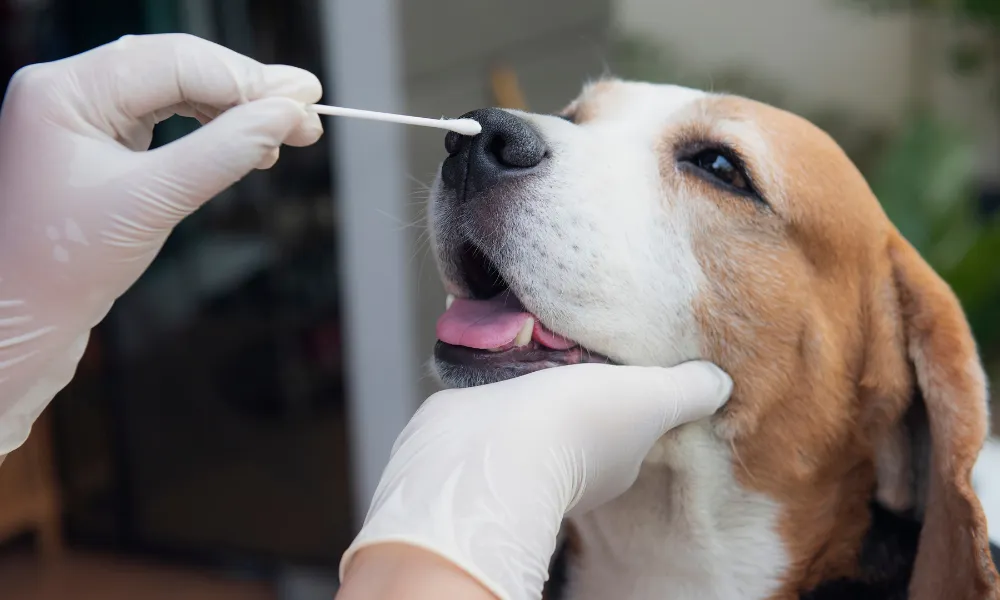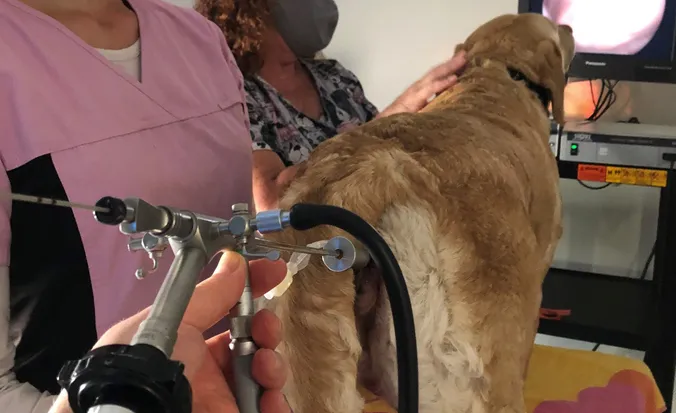Breeding two different dog breeds, often referred to as crossbreeding or hybrid breeding, is a practice that must be approached with scientific knowledge, ethical responsibility, and a deep understanding of canine health and behavior.
Whether for working purposes, aesthetics, or companionship, determining the compatibility of two different dog breeds for breeding involves a multi-dimensional evaluation.
This article outlines the key factors that responsible breeders and canine geneticists consider before embarking on a crossbreeding program.
Topics
- Genetic Health Compatibility
- Physical Compatibility and Size Considerations
- Temperament and Behavioral Traits
- Reproductive Health and Fertility
- Purpose of the Crossbreed
- Breed Standards and Registry Recognition
RELATED
- Breeding Frequency for Male German Shepherds
- How Does Selective Breeding Affect Dog’s Appearance
- Understanding the Prey Drive of German Shepherds
- 4 Types of German Shepherd Coats
- German Shepherd Coat Color Patterns and Variations
01. Genetic Health Compatibility
Perhaps the most crucial factor in breed compatibility is genetic health. Each breed has its own set of common hereditary diseases.
When considering two breeds, a thorough genetic screening of both parent dogs must be performed to avoid doubling up on hereditary problems.

Breed-specific conditions
For example, a certain percentage of dog breeds, such as German Shepherds, Rottweilers, English Bulldogs, Pugs, etc., are affected by hip dysplasia, a condition that impacts mobility and comfort.
Similarly, Cavalier King Charles Spaniels frequently develop mitral valve disease, which affects heart function. Without proper health screenings, breeding these dogs could increase the likelihood of passing on such issues.
Recessive Genes
Recessive genes can silently pass through generations, posing hidden risks in breeding. Even if neither parent shows symptoms, both may carry recessive genes for a disease, meaning their offspring could inherit and express the condition.
| Recessive genes are genetic traits that only appear if an individual inherits two copies, one from each parent. If only one copy is inherited, the trait remains hidden but can still be passed to future generations. |
Genetic testing panels such as those provided by Embark or Wisdom Panel can identify hidden risks and ensure that breeders are not inadvertently perpetuating harmful traits.
Related: How To Know What Type Of German Shepherd Do You Have?
02. Physical Compatibility and Size Considerations
Breeding dogs with dramatically different physical structures or sizes can lead to serious complications, especially for the female during pregnancy and delivery.

Size Disparity
Breeding a large male with a significantly smaller female can lead to oversized puppies, which may complicate the birthing process. This size disparity increases the risk of dystocia, a condition where the female struggles to deliver naturally, potentially requiring emergency C-sections.
Conformation Compatibility
Leg length, snout structure, and body proportions all affect the physical health and mobility of the offspring. For example, breeding a short-nosed (brachycephalic) breed with a long-nosed breed may lead to respiratory issues or malformed skulls.

03. Temperament and Behavioral Traits
Temperament is partly genetic and greatly influences compatibility, especially for households with children or other pets. Breeding two dogs with vastly different temperaments may result in unpredictable behavioral traits in the offspring.
Complementary vs Conflicting Traits
Mixing breeds with contrasting energy levels can lead to unpredictable temperament and activity needs in their offspring.
A high-drive working breed like a Border Collie crossed with a relaxed companion breed like a Basset Hound might produce puppies with inconsistent behaviors, making training and daily care challenging for unprepared owners.

Trainability and Drive
Working breeds often have high prey drive, herding instincts, or guarding tendencies. Breeding such dogs with others lacking those instincts may dilute or confuse behavioral cues.
Understanding the behavioral lineage of both parent breeds helps breeders anticipate and guide the development of the hybrid puppies.
04. Reproductive Health and Fertility
Fertility is not guaranteed between all breed pairings. Factors such as hormonal cycles, physical mechanics of mating, and even immune system incompatibility can hinder successful breeding.
Heat Cycles and Timing
Successful breeding depends on proper timing and compatibility during a female dog’s heat cycle. Not all female dogs readily accept every male, and some pairings require careful monitoring to ensure successful mating.
In cases where natural breeding is difficult, artificial insemination may be necessary to achieve conception while maintaining genetic diversity and health standards.
| Artificial insemination is a reproductive technique where sperm is manually introduced into the female’s reproductive tract. It helps overcome breeding challenges and ensures genetic diversity in animals. |

Immune System Mismatch
In rare cases, a female dog’s immune system can mistakenly treat the male’s sperm as a threat, triggering an immune response that prevents successful conception. This incompatibility can lead to failed pregnancies, requiring veterinary intervention to identify and manage the issue.
Techniques like hormone treatments or artificial insemination can sometimes help overcome these challenges, ensuring a higher chance of successful breeding.
05. Purpose of the Crossbreed
Intent plays a significant role in determining if a crossbreeding effort is justified or desirable.
Functional Breeding
Functional breeding focuses on creating dogs with specific traits suited for particular roles or needs.
The Labradoodle, for instance, was developed to combine the hypoallergenic coat of a Poodle with the intelligence and trainability of a Labrador Retriever, making it an ideal guide dog for individuals with allergies. This method considers factors like temperament, health, and adaptability to ensure the resulting breed serves its intended purpose effectively.

Ethical Breeding
Ethical breeding prioritizes the health, temperament, and overall well-being of dogs rather than novelty or aesthetics. Responsible breeders carefully evaluate whether a crossbreed will enhance or sustain desirable traits, ensuring the resulting dogs are functional, healthy, and suited to their intended roles. This approach helps prevent genetic issues and maintains high welfare standards in canine breeding.
06. Breed Standards and Registry Recognition
While not a biological factor, breed compatibility can also be influenced by breed clubs and kennel organizations. Many registries, like the American Kennel Club (AKC), do not recognize hybrids or mixed breeds, which could limit show eligibility and impact breeders’ reputation.

Designer Breeds
Designer breeds, like the Cockapoo and Goldendoodle, have gained recognition in certain registries due to their desirable traits. However, responsible breeding should always prioritize health and temperament over trends or aesthetics.
Fad breeding practices that focus solely on appearance can lead to genetic issues and compromised well-being in future generations, highlighting the need for ethical and informed breeding decisions.
Ethical Considerations
Ethical breeding requires careful planning to prioritize health, temperament, and overall well-being. Even when breeding for a registrable hybrid, breeders must follow responsible practices, including genetic testing, avoiding harmful traits, and ensuring suitable pairings.
Ethical considerations help maintain breed integrity and protect future generations from preventable health issues, ensuring that every dog thrives in a loving, well-prepared home.
Conclusion
Breeding two different dog breeds is a decision that must be made with care, expertise, and a long-term perspective. Compatible breed pairings are those that harmonize genetically, physically, behaviorally, and ethically.
Responsible breeders must prioritize health screening, consider temperament, evaluate size and conformation, and breed with a clear, purposeful goal in mind. Only through thoughtful planning and professional guidance can crossbreeding yield positive outcomes for both the dogs and the people who care for them.
Enjoyed this post? Share it with your friends to spread the word! We’d love to hear your thoughts—drop your feedback in the comments below!
Also Read
- Should You Shave a German Shepherd in Summer?
- Ultimate Guide to German Shepherds Water Activities
- How Do German Shepherds Handle Hot Weather
- German Shepherd Energy Levels by Age | Activity Needs




Leave a Reply